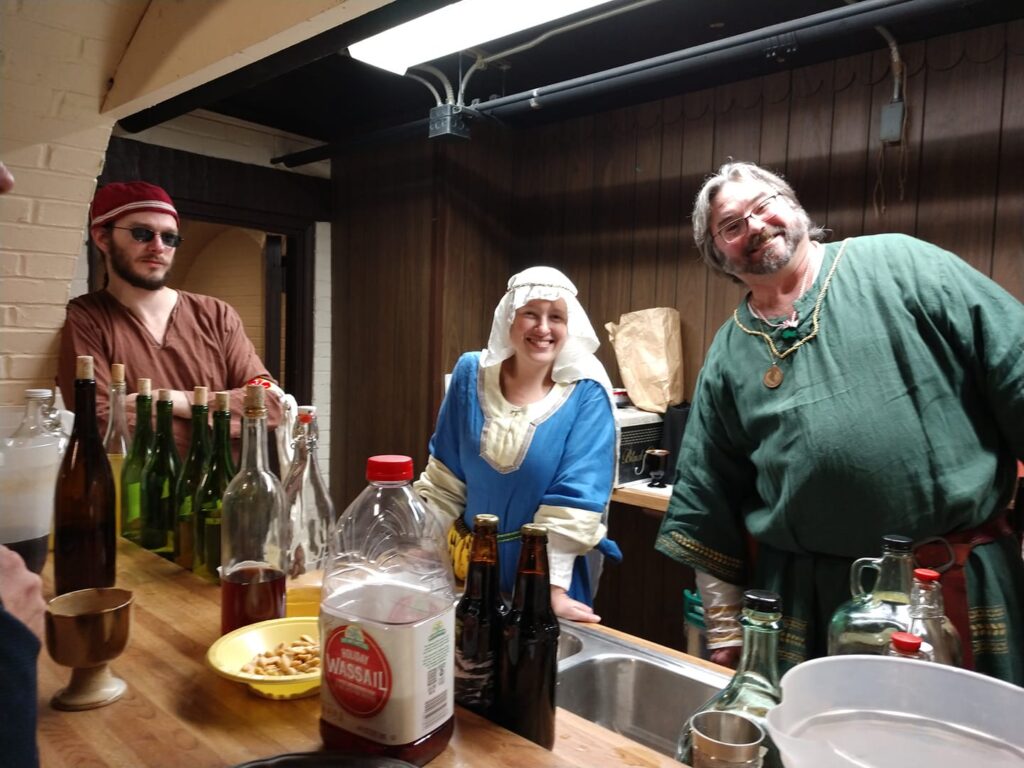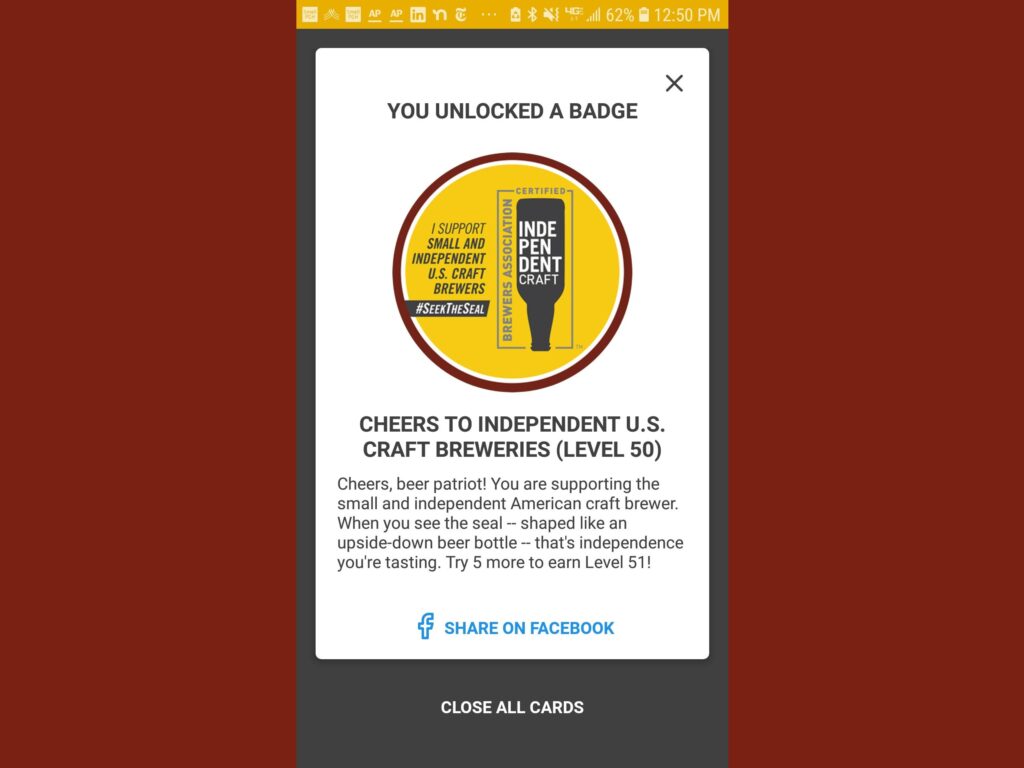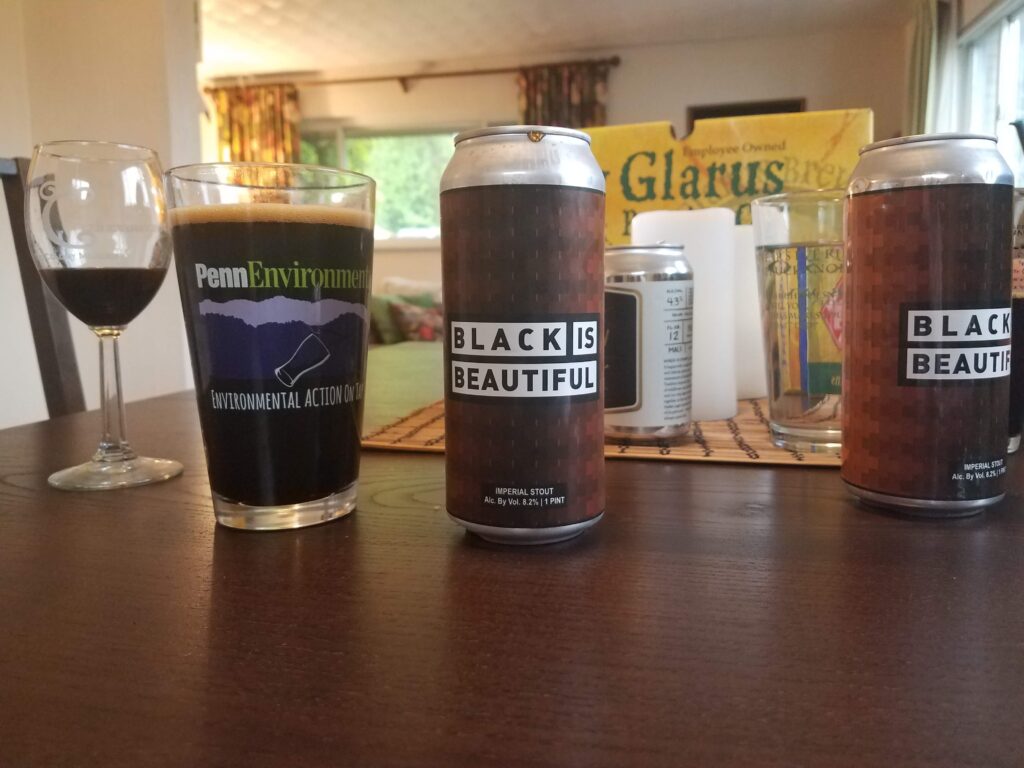What You Can Do
One of the things I’ve loved about brewing is how many different facets of study are tied to it – not just chemistry and microbiology, but other fields such as history, economics, and sociology, which we’ve explored in the last few weeks during this examination of equity across the centuries. To wrap up this series, this final post will look at some of the things you can do to be a more informed and involved consumer and even have a little more fun as you go.
Brew Your Own
Getting more involved in the process and trying to make it yourself can be very gratifying. In full disclosure, the hobby is not without its impacts: it is very water-intensive (though I try to reclaim and reuse what I can), and it can get expensive if you let it, but you don’t need to have a basement full of high-end equipment (like some of us do) to try it out. There are fairly inexpensive small-batch kits you can buy online or from your local brew shop that can give you a really good understanding of the process and of different styles. As I mentioned before, this whole adventure for me started out with a 1-gallon oatmeal stout kit from Brooklyn Brew Shop.[1] It’s also just fun to say you made something that you can then share with friends.
My homebrewing hobby expanded my social network at a time when I really needed it. Of the many people I now know because of this interest is my best friend, who is a professional brewer now but worked at my local brew shop when we first met. This mutual interest served as a great foundation for our friendship, as we often have deep conversations (about our very different positions on religion and politics, among other things) over beers. We have brewed together a number of times – often with great or at least interesting (but always drinkable) results. Part of the fun of brewing is the social aspect, whether making something together and/or enjoying it together.

Over the years I’ve hosted brewers guild meetings where we brew something to showcase at an event, I’ve had beer brewing during parties and let guests who haven’t brewed before add ingredients at different times, I’ve even just had friends stop by to hang out while I work. There is a lot of “hurry up and wait” in homebrewing, which lends itself well to an afternoon of chatting over beers in between periodic flurries of activity. And that’s why I was very excited when my friend suggested we brew batches of Black is Beautiful, the beer I mentioned in last week’s post designed to raise awareness and money for Black equity initiatives.[2]
This endeavor seemed to be doomed, however. We were both off our game that day, and a series of mishaps and miscommunications led to a horribly undrinkable result. And, as if the universe was trying to hammer home a point, the skies then opened up with biblical-scale rain and crushed my husband’s pop-up tent, which we had been using. Knowing we had messed up our brews, but not having the heart to dump them, we ignored them for the subsequent 10 (and counting) months. All we could do in response to this comedy of errors was laugh about how poetic it was that we, as white people, tried to do something well-intentioned, but messed it up and then walked away from it.
Buy Local, Buy Independent
Unsurprisingly, many people prefer to buy, rather than brew, their beer – and clearly, given the story I just relayed, there is nothing wrong with that. I did have a good laugh when I was doing research for this series and saw that we could have just bought a Black is Beautiful kit from the same place where I got my first brewing kit all those years ago.[3] But we did ultimately get to try some Black is Beautiful since I picked up a 4-pack at Brooklyn Brewery last October during a road trip to visit friends. And it was while relaxing over a beer with my husband at Brooklyn Brewery that I started looking into the definitions of “small,” “independent,” and “craft” and began constructing the framework of this series.

This series ultimately turned out to be quite timely, as we are now heading into American Craft Beer Week.[5] This annual celebration is designed to raise interest in beer and brewing, particularly by encouraging people to explore new styles at independent craft breweries. According to their website, most Americans live within 10 miles of a craft brewery, and some of us have a bounty from which to choose. From a quick look at their map, there appear to be nearly 100 within an hour of Pittsburgh.[6] There are still some in Pittsburgh that I haven’t been to yet, and I plan to change that this week.
If you aren’t near a brewery, or if it’s a day that breweries aren’t generally open (typically Sundays, Mondays, and Tuesdays, for instance), you can still have luck picking something up from a good beer distributor. Wanting to assemble a mindfully curated “independent craft” six-pack for the weekend, I spent more time than I’d like to admit standing in front of a case of singles at a local bottle shop, referencing the official Brewers Association directory, which you can filter by various criteria including location, size, and ownership.[7]
Benefits of drinking craft beer include being exposed to a seemingly endless variety of styles – if you have an adventurous palate, you can satisfy your taste buds with new beers as they come online and explore new breweries as they open. Benefits of drinking beer from small breweries include supporting small businesses – not just the brewery itself, but often other parts of their supply chain as well. For example, the nanobrewery up the street from our house makes it a point to source from other small, local businesses, helping the local economy. Benefits of drinking independently brewed beer include knowing that the owners have some say over how they do business and with whom.

And when issues about equity arise (it will always be a “when,” not an “if,” because we’re all growing and learning all the time), smaller breweries that are integrated into their host communities are likely to be more responsive and flexible. That’s why it’s not just a matter of voting with your dollar – though that does play a large role – but also getting to know the people who run local businesses, talking to them, learning about their priorities, thanking them for things they do that you appreciate, and (gently) raising concerns if there’s a learning opportunity.
Brewing has a rich history, and beer holds a special place in our society – as a vehicle to unwind, to celebrate, and to connect with others. Getting to know the processes and the products can be a lot of fun, and it can become even more rewarding by including more people at the table. I hope you mark this American Craft Beer Week by trying a new brewery, trying a new style, and/or talking to someone new about something you’ve learned. And please share your experiences here!
Thanks for reading – and cheers!
[1] https://brooklynbrewshop.com/collections/beer-making-kits
[2] https://blackisbeautiful.beer/
[5] https://www.craftbeer.com/news/american-craft-beer-week
[6] https://www.craftbeer.com/breweries/find-a-us-brewery
[7] https://www.brewersassociation.org/directories/breweries/
0 Comments